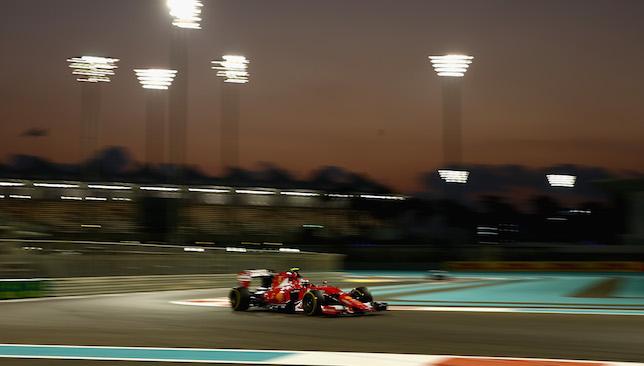
Kimi Raikkonen is a fan of the older F1 tracks and claims all the new ones are “the same” while former Ferrari team-mate Fernando Alonso believes it is important for the sport to widen its reach by catering to previously untapped markets.
– INTERVIEW: Ricciardo learning lessons from a difficult season
– Yas Marina Circuit: A track record of F1 drama and innovation
– Abu Dhabi Grand Prix: Circuit guide infographic
– #Life360: The UAE’s search for a Formula One star of its own
With Sochi introduced to the calendar last year, Mexico returning for the first time in 23 years this season and Baku added to 2016, motorsport’s top flight continues to branch into new territory, which is being met by mixed reactions from the drivers.
The debate of old versus new is often a hot topic in F1 – a sport steeped in tradition – particularly when the drivers are at Abu Dhabi’s modern and flashy Yas Marina Circuit – a track that was opened in 2009 and is hosting only its seventh grand prix.
It was designed by Hermann Tilke, who is also the man behind the tracks in Sepang, Bahrain, Shanghai, Istanbul, Valencia, Singapore, Korea, India, Austin and Sochi.
Vettel & Raikkonen on the world’s fastest roller coaster, Formula Rossa, today at the @FerrariWorldAD. pic.twitter.com/fsyQ33FGDq
— Sebastian Vettel #5 (@sebvettelnews) November 26, 2015
Asked whether he would have preferred F1 got back to one of the eliminated race locations like Imola (Italy), Magny Cours (France), Istanbul Park (Turkey) or Valencia (Spain) instead of adding new venues, Raikkonen said: “It’s always the new places that are quite similar, designed by the same guy, so I’m not saying that they’re not good but they are more the same. I enjoy the older, traditional circuits.
“I liked Magny Cours, not many people, quiet, easy. It was one of the best places to go. I liked the older, they looked a bit nicer, a more normal feeling than when we come here and everything is put – in this case – in a more desert area.”
Alonso, who is wrapping up his 14th season in F1, agrees that the traditional circuits have their special appeal but he also understands the need to visit new places.
“When you go to new countries, you open the sport up to new people and to new generations so it’s also quite a good feeling,” said the Spanish McLaren driver. “We are travelling a little bit more. When I started some years ago, there were 16 races; now, next year, they have planned 21 and most of them out of Europe, so it’s definitely more demanding but it’s the direction that the sport chooses.”
Three-time world champion Lewis Hamilton says it’s key to maintain the balance between tradition and modernity.
“It’s good to go to different countries and to spread the word of Formula One, give them the experience and gain new followers for the sport,” said the Brit.
“It would be kind of good to keep the balance of the real classic circuits rather than just a bunch of new circuits because the new circuits are generally not as good as the old circuits, they don’t carry the same history or heritage and I think it’s important that we keep really close to the heritage of F1 which is those old, historic circuits.”
Following in the footsteps of Monaco and Singapore, Baku will be a street circuit, which means the new grand prix will at least not run the risk of being the “same” like Raikkonen implied.
Williams driver, Felipe Massa, who is completing his 13th season in F1, welcomes the idea of another street circuit on the calendar.
“Sometimes in the street circuit you can bring more people to watch the race,” he said. “I’ve never been to Baku but also I had never been to Bahrain before or maybe to Abu Dhabi and I really enjoy those two. So I hope it can be like that in Baku.”